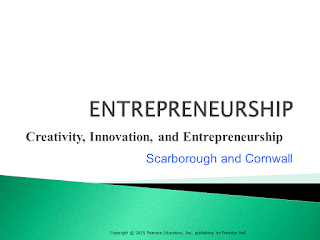Team Roles Test
Team roles test
According to
team roles theory there are specific different
team roles. These roles can be functional, organizational, personal or even
skillful. Each team should consist of different team roles, depending on the
specific goals the team wants to achieve.
A team that
does not have the ideal composition may run into problems. For example, a team
consisting of only creative individuals will generate many ideas, but none of
them will be implemented. A team consisting of only experts may lose sight of
the big picture. A team will perform better if it is aware of the different
roles required to reach a specific goal and is able to include those roles
within the team. The last 30 years the interest in team composition has
increased.
Essentially,
roles are equal to 'persona' (masks) or specific competency profiles and
have been mentioned explicitly since ancient Greek history. Not just only in
working life but also the roles people play in life, family and military. The
application of team roles however seems to be primarily directed at management
teams nowadays.
This free
team roles test of 123test® is inspired by ideas on team roles
theories, generalized competency frameworks and knowledge of the Big Five personality theory. It measures roles found in
businesses and management teams throughout the world in many cultures.
Instructions team roles test
This test
determines which team roles best suit you. For each pair of activities or
qualities below, choose the one which best fits you. If both apply to you, you
should choose the one that best fits your personality.
Big Five personality theory
Why do people respond differently to the same situations? In contemporary psychology, the Big Five factors of personality are five broad domains which define human personality and account for individual differences. This article tells you more about the Big Five personality theory. After reading it, take our free personality test or career test to determine your own Big Five personality type.History of Big Five personality theory
Several independent sets of researchers discovered and defined the five broad factors based on empirical, data-driven research. Ernest Tupes and Raymond Christal advanced the initial model, based on work done at the U.S. Air Force Personnel Laboratory in the late 1950s.1 J.M. Digman proposed his five factor model of personality in 19902, and Goldman extended it to the highest level of organizations in 1993.3 In a personality test, the Five Factor Model or FFM4 and the Global Factors of personality5 may also be used to reference the Big Five traits.Traits of the Big Five personality test
Human resources professionals often use the Big Five personality dimensions to help place employees. That is because these dimensions are considered to be the underlying traits that make up an individual’s overall personality. The Big Five traits are Openness, Conscientiousness, Extroversion, Agreeableness, and Neuroticism or OCEAN:- Openness - People who like to learn new things and enjoy new experiences usually score high in openness. Openness includes traits like being insightful and imaginative and having a wide variety of interests.
- Conscientiousness - People that have a high degree of conscientiousness are reliable and prompt. Traits include being organized, methodic, and thorough.
- Extraversion - Extraverts get their energy from interacting with others, while introverts get their energy from within themselves. Extraversion includes the traits of energetic, talkative, and assertive.
- Agreeableness - These individuals are friendly, cooperative, and compassionate. People with low agreeableness may be more distant. Traits include being kind, affectionate, and sympathetic.
- Neuroticism - Neuroticism is also sometimes called Emotional Stability. This dimension relates to one’s emotional stability and degree of negative emotions. People that score high on neuroticism often experience emotional instability and negative emotions. Traits include being moody and tense.

Comments
Post a Comment